How to Visit Joseph Stalin Underground Printing House Museum
Most people visiting Tbilisi don’t realize it is home to one of the strangest slices of Georgian and Soviet history. Tucked away in a quiet part of the Avlabari neighborhood, the Stalin Underground Printing House Museum isn’t exactly shouting for attention—and yet, it played a key role in the early 1900s revolutionary underground movement.

Long before Joseph Stalin became the infamous Soviet leader, he was a young radical organizing strikes, stirring rebellions, and spreading Marxist ideology through illegal printouts.
Unlike other secret printing houses, it wasn’t hidden under a grocery store (Moscow) or stable (Baku). Instead, it looked like an ordinary residential building from the outside.
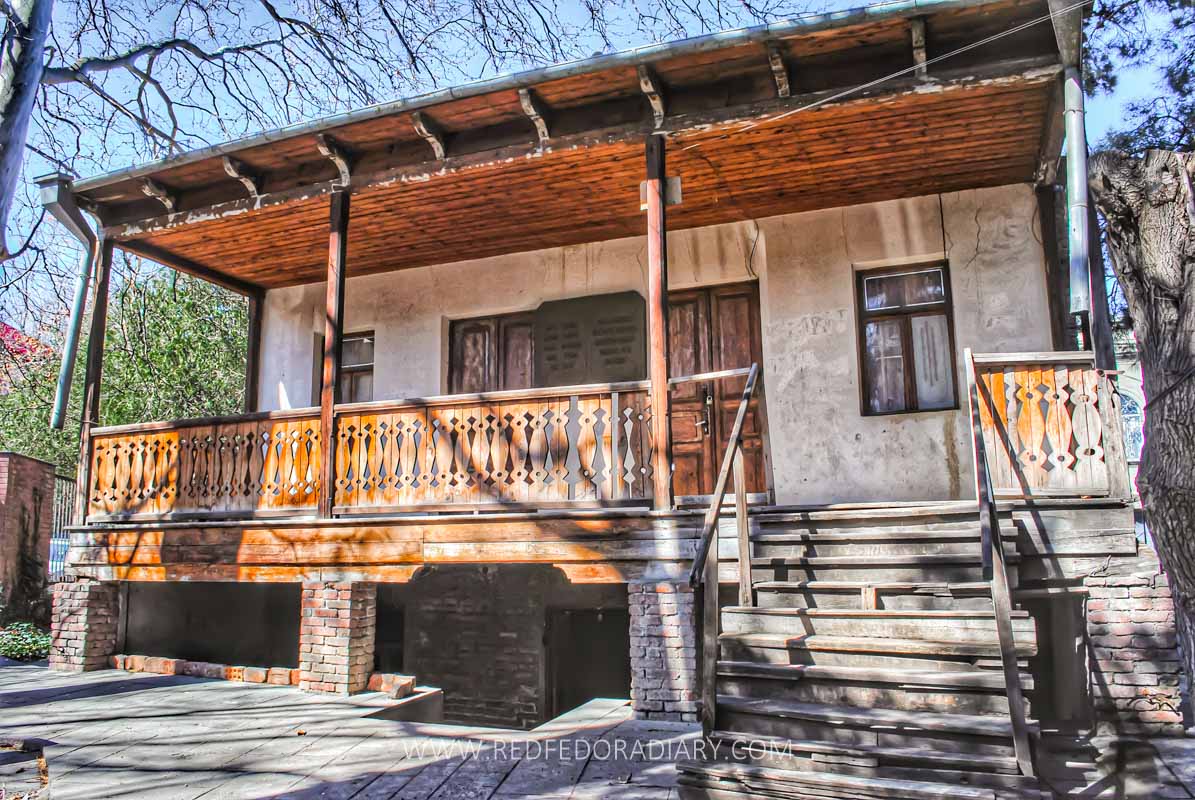
But down in its basement, a full-fledged underground printing operation ran for several years, churning out revolutionary leaflets in three languages, all under the nose of the Tsarist police.
The Soviet government turned the place into a museum in the late 1930s, but over the last several decades, it has been mostly neglected as part of the decommunization process, making it one of those under-the-radar spots that barely gets any visitors, yet still manages to survive.
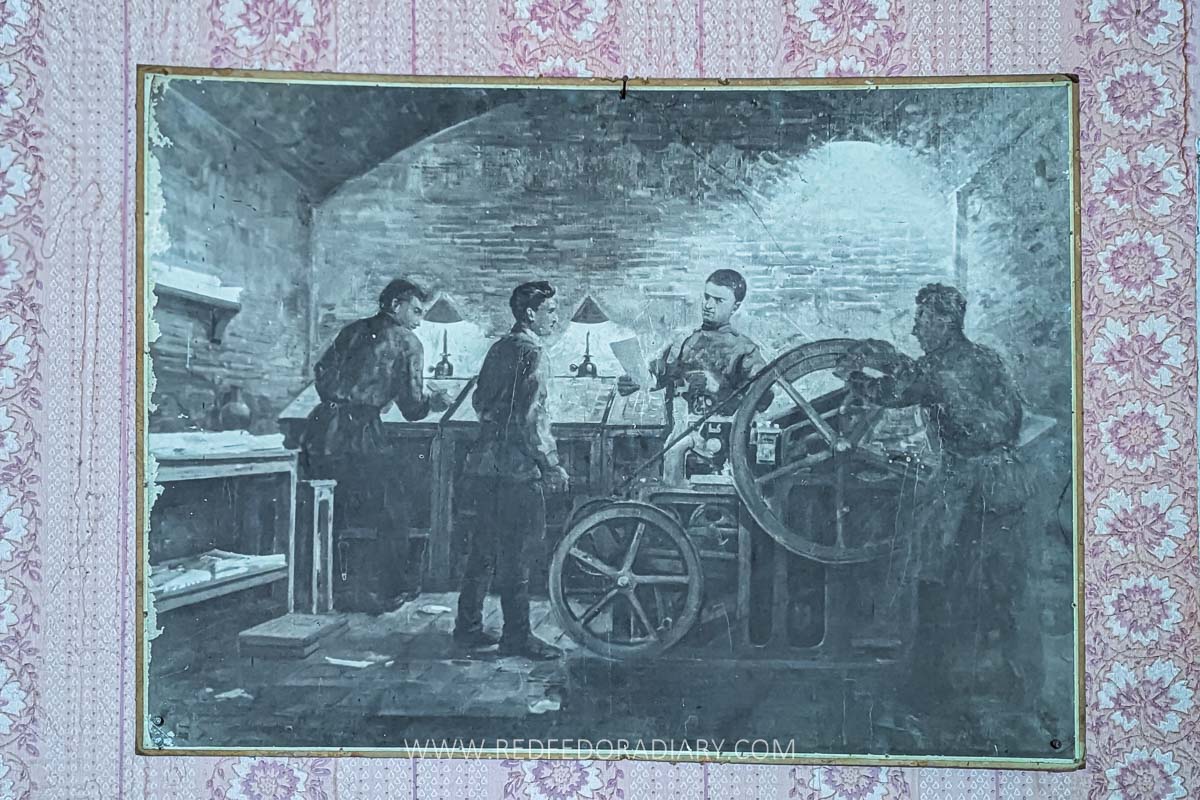
The museum is maintained by two caretakers who are usually happy to show you around. Expect a low-key visit with original printing equipment, black-and-white photos, and a slightly eerie feeling.
I’ve visited this place more than once, and every time I come here, the conditions worsen due to neglect and lack of maintenance.
But it still feels surreal, maybe because you’re literally walking into a space where Stalin once plotted revolution—not as a powerful dictator, but as a 20-something-year-old rebel.

It’s not grand or romanticized like the Joseph Stalin Museum in Gori. It’s gritty and raw, with a very interesting layout, story, and the scope of its operations.
If you’re into lesser-known history or Soviet-era relics such as the most striking Brutalist or Modernist architecture or beautiful mosaics and communist leftovers or enjoy discovering weird corners of Tbilisi that most people skip—this place is right up your alley.
This dedicated post tells you everything you need to know about visiting the Stalin Underground Printing House Museum—how to find it, what to expect inside, and why it’s worth adding to your Tbilisi itinerary.
Disclaimer: Some of the links in this post are affiliate links, which means I may earn a small commission if you buy something through them—at no extra cost to you. It helps support my blog and lets me share real, first-hand travel tips. Learn more
Plan Your Trip to Georgia Like A Pro
The history of Stalin Underground Printing House
To understand why the Stalin printing press in Tbilisi (also referred to as the Avlabari Printing House back in the 1900s) mattered so much, you need a bit of context about what was happening in the Russian Empire then.
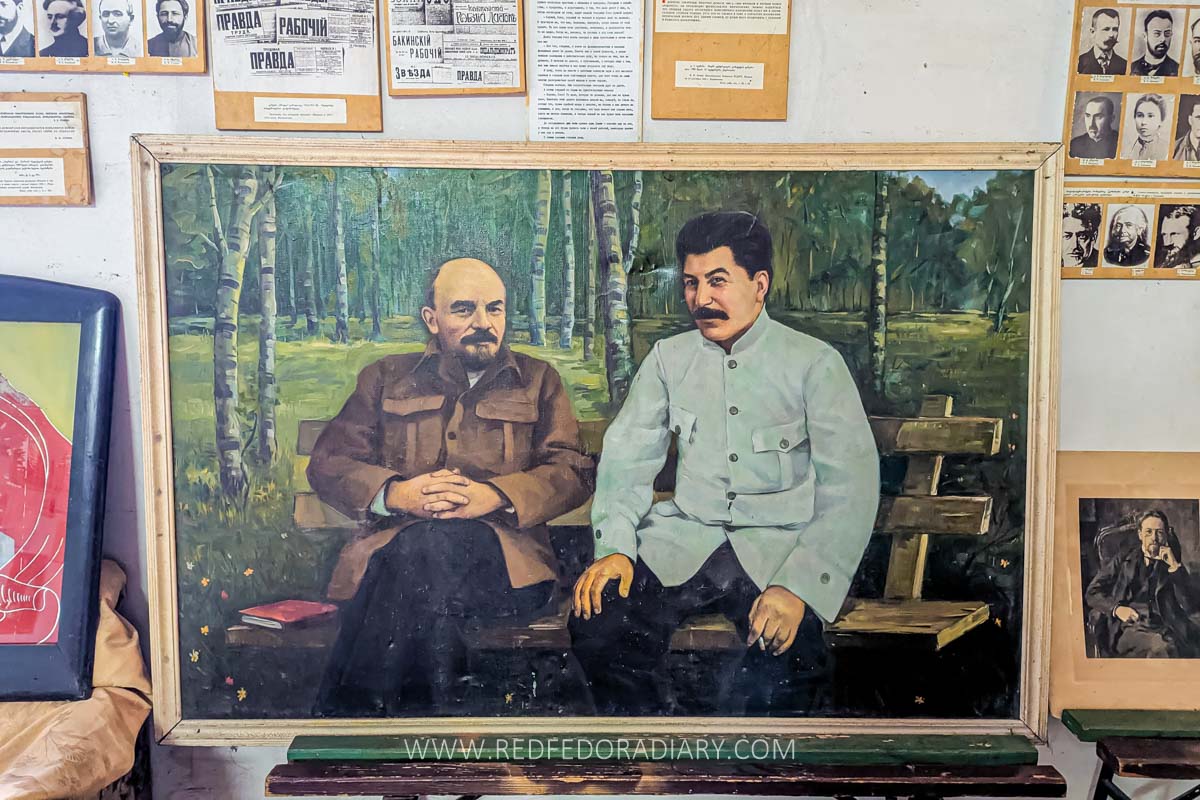
At the start of the 1900s, Tsar Nicholas II was still in charge, but his leadership was weak and deeply unpopular.
The Empire was politically repressive, socially unjust, and profoundly unequal. Workers were exploited, peasants were landless, and ethnic minorities were dealing with intense Russification policies.
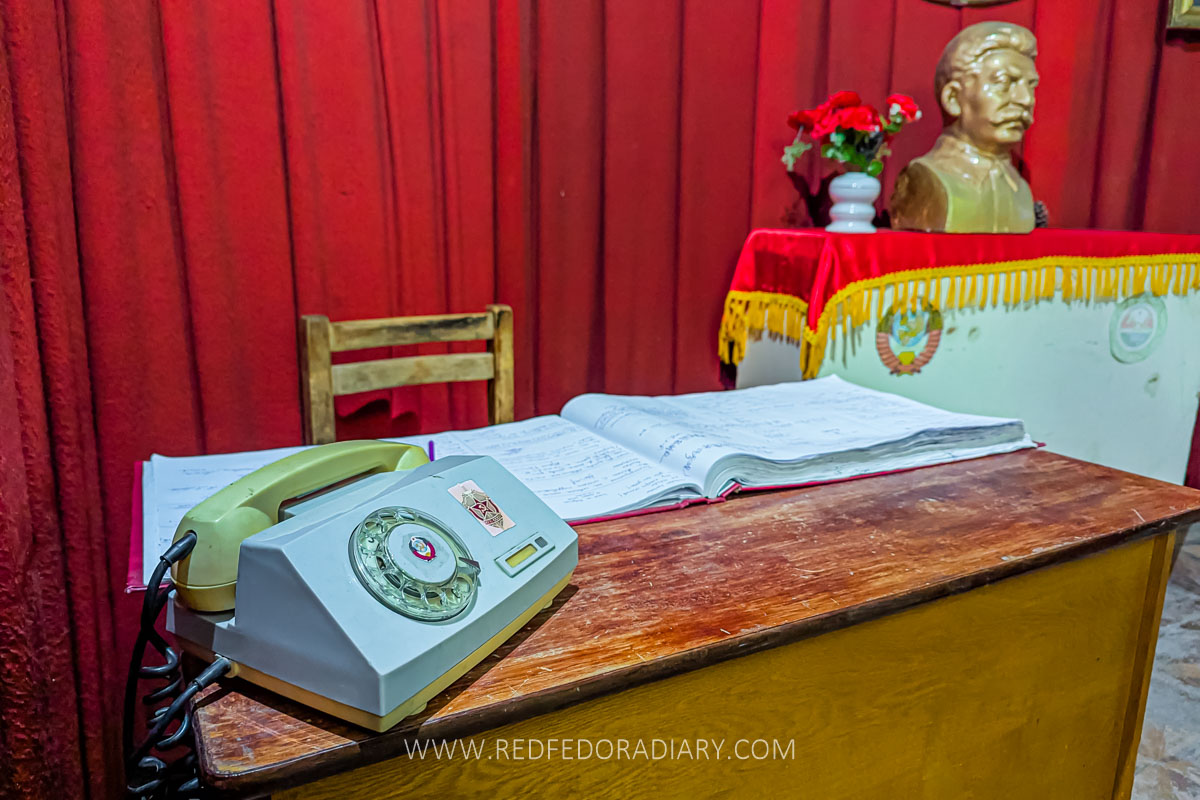
Although Russia was slowly catching up with the Industrial Revolution, most of the country remained poor, rural, and stuck in the past. Those in power couldn’t agree on how to modernize—or who should lead that change.
The Tsarist police would shut down any form of dissent. There was no free press, political gatherings were banned, and criticizing the Tsar could result in arrest or worse.
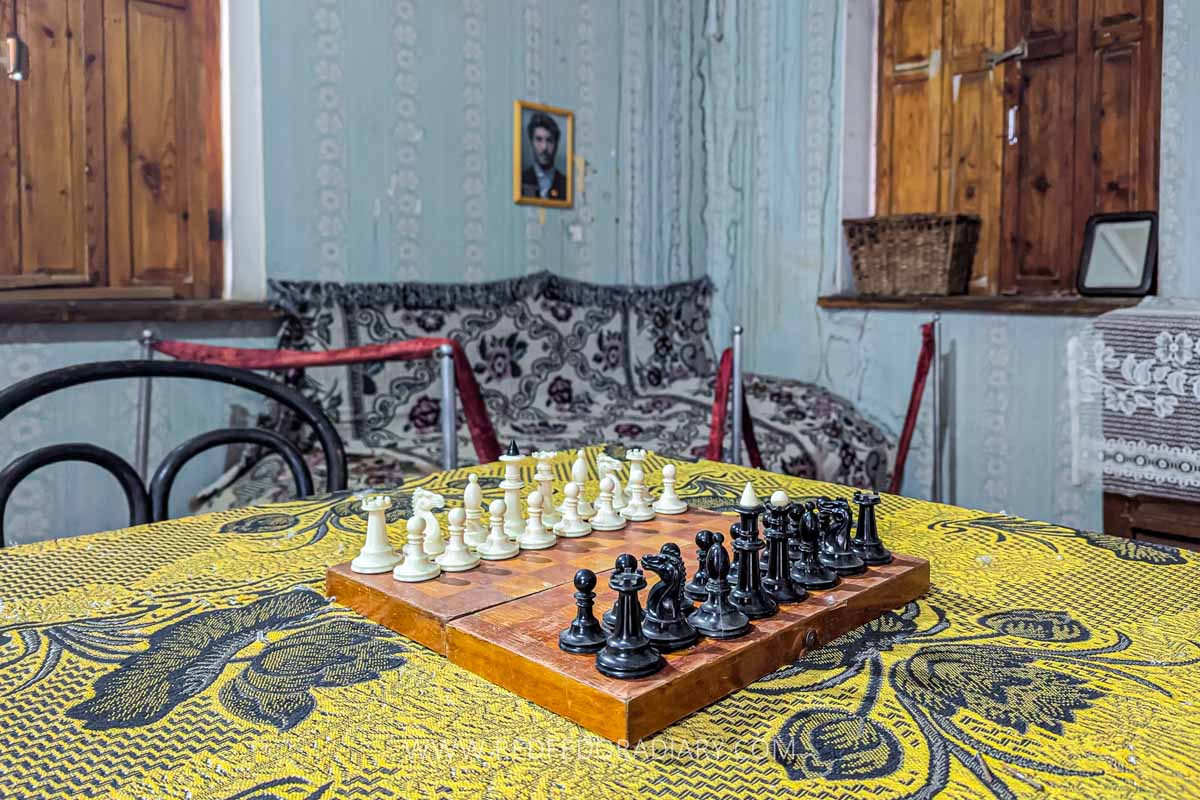
Therefore, printed materials—leaflets, newspapers, pamphlets—became powerful tools in this environment. They were one of the only ways to spread new ideas, organize strikes, and unite people who were angry and ready for change. That’s where underground printing houses came in.
The Russian Social Democratic Labour Party (RSDLP), founded in 1898 by uniting several underground Marxist circles to bring down the autocracy and build a socialist state led by the working class, was the main player of that time.
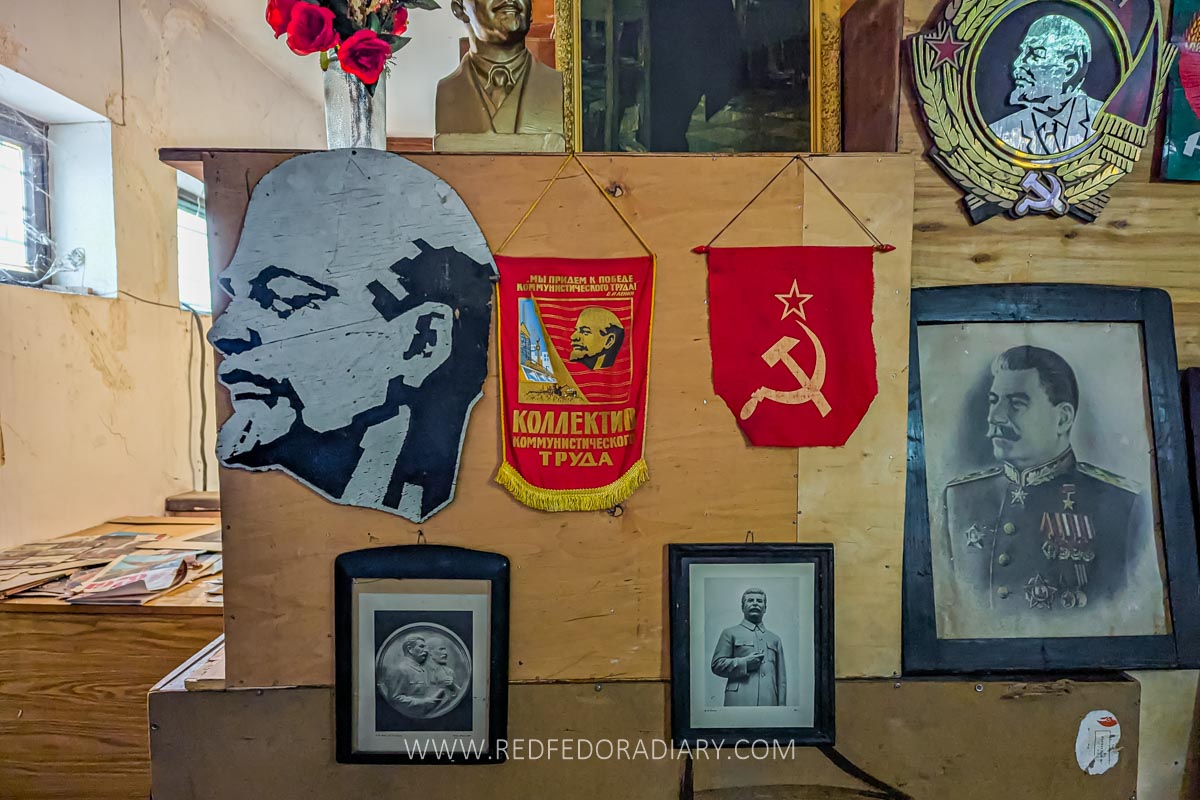
Due to their ideological and strategic disputes, the party split into two factions in 1903 – the Mensheviks and the Bolsheviks.
The Mensheviks believed socialism would come gradually once the working class was more developed, while the Bolsheviks (led by Vladimir Lenin) thought change needed to happen fast—and by force.
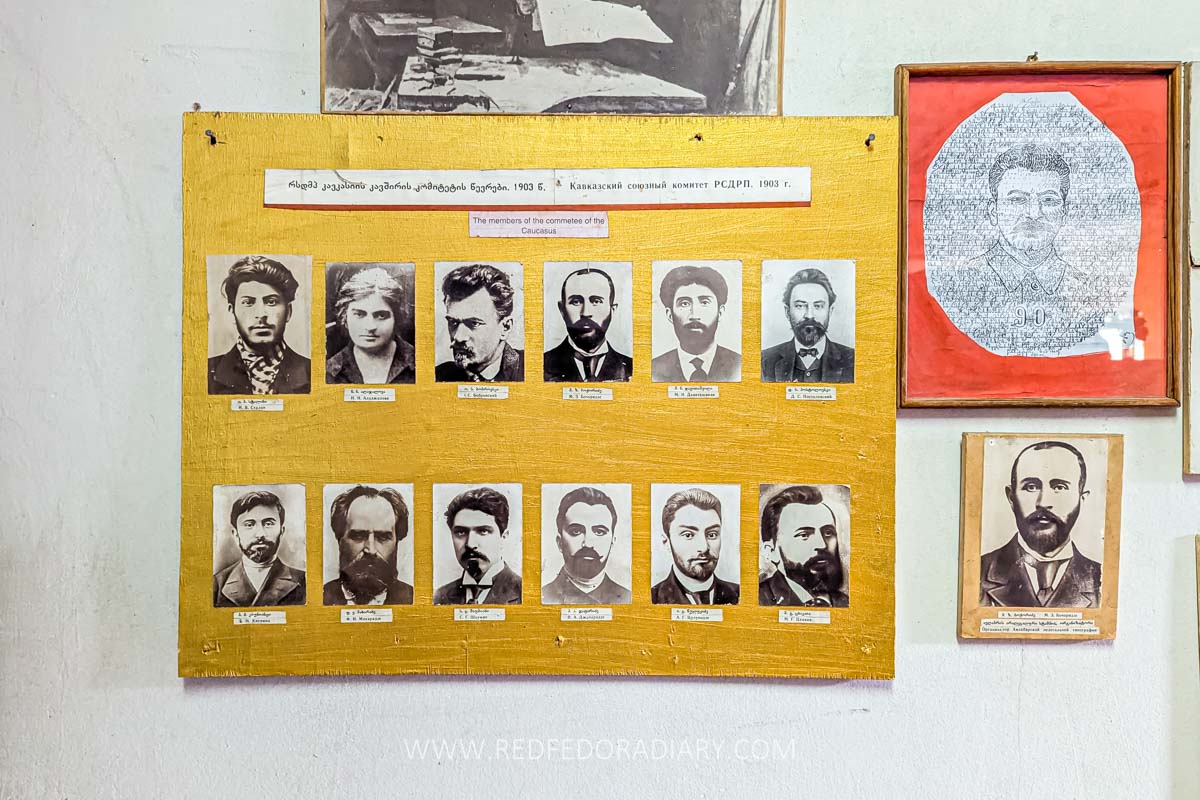
With so much political confusion, growing unrest, and no real plan at the top, revolutionary ideas started gaining momentum fast. That’s when Ioseb Jughashvili, later known as Joseph Stalin, began making his mark—right here in Tbilisi.
Before he climbed the ranks of the Soviet regime, Stalin was part of the Georgian Social-Democratic movement and deeply involved in spreading Marxist ideology throughout the Caucasus and Europe.
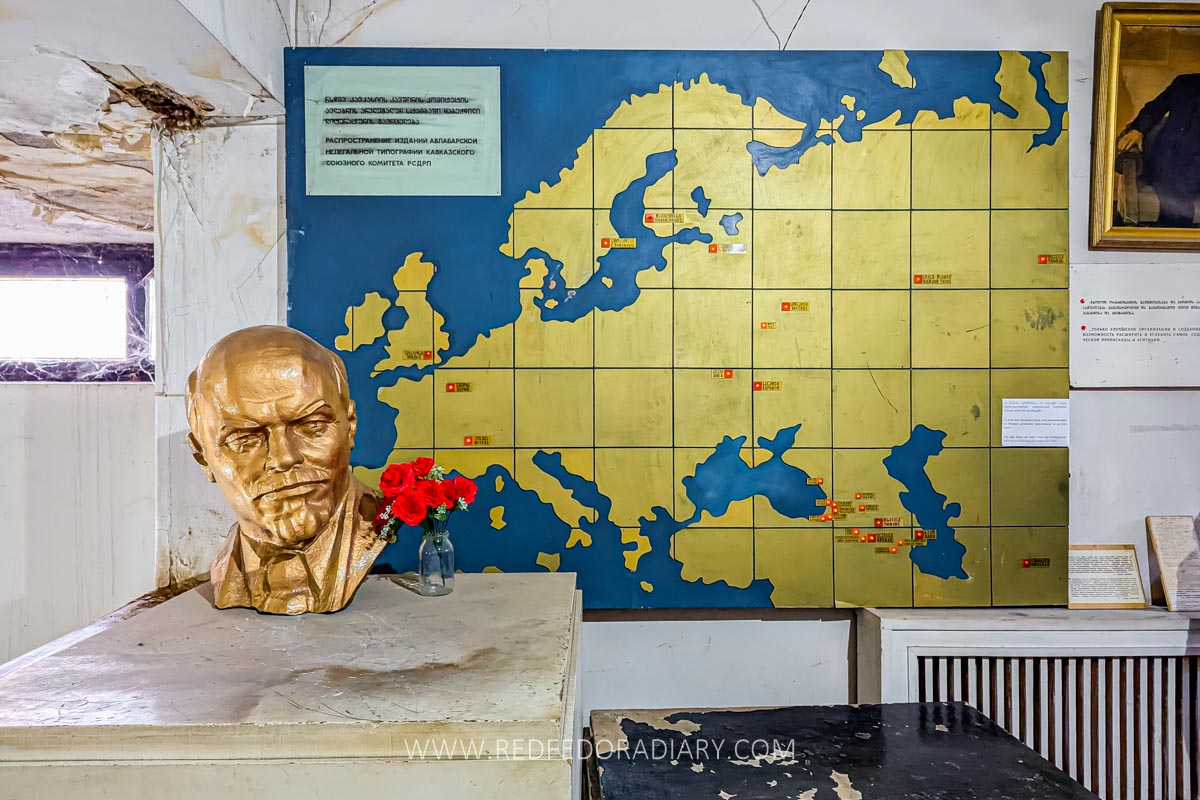
Established in 1903, the Stalin Underground Printing House operated for about three years. Its mission was straightforward but dangerous—to print and distribute illegal socialist materials across the continent to mobilize workers, encourage strikes, and undermine Tsarist rule.
Running an illegal printing house was no small feat. There were constant threats of police raids, arrests, and informants. But the organizers were incredibly methodical.

The house, located at 7 Kaspi Street in Avlabari district, looked perfectly ordinary from the outside. There were no unusual comings and goings, signage, or obvious activity.
A printing press manufactured in 1893 in Augsburg, Germany, was smuggled into Georgia from Baku’s closed underground printing house called Nadya in 1904.
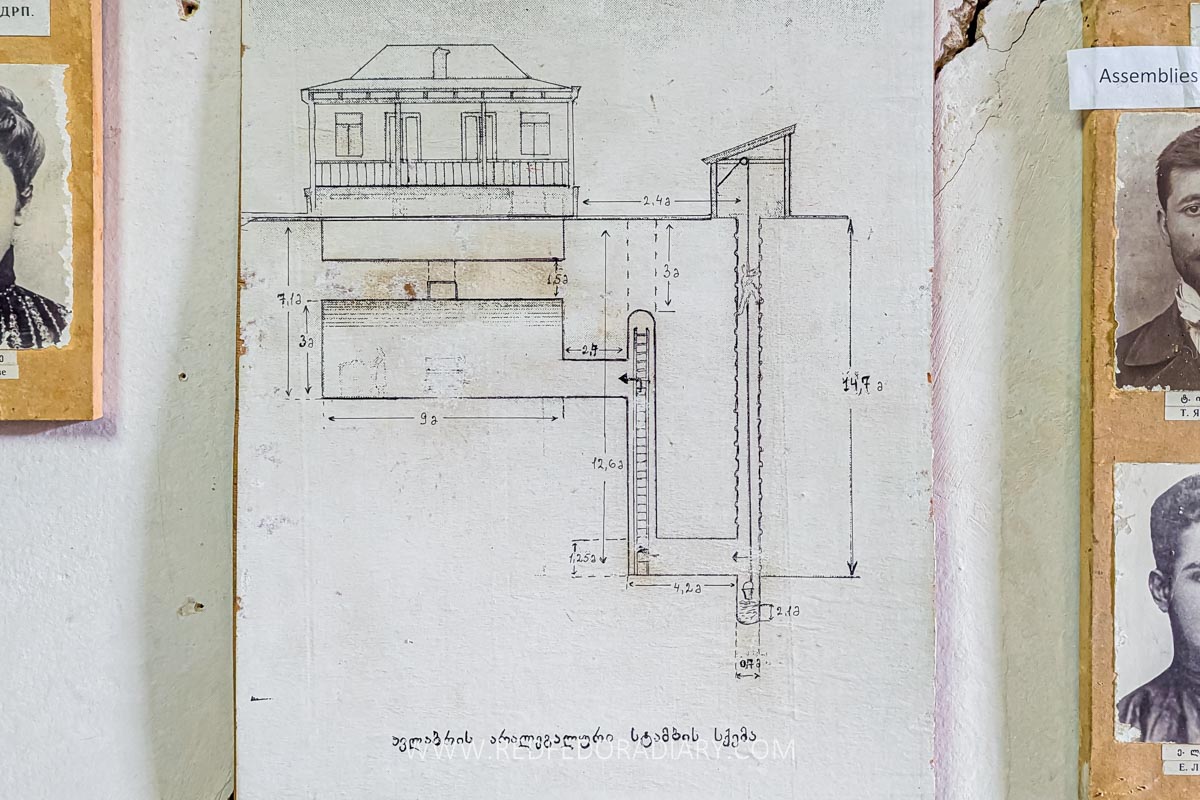
The basement that hid the press behind thick walls was accessed through a concealed entrance.
The comrades would enter the room via a 15-meter-deep well, crawl into a 4-meter-long horizontal tunnel to the ladder, and walk up to the room. The basement had several secret shafts and tunnels if they needed to escape.
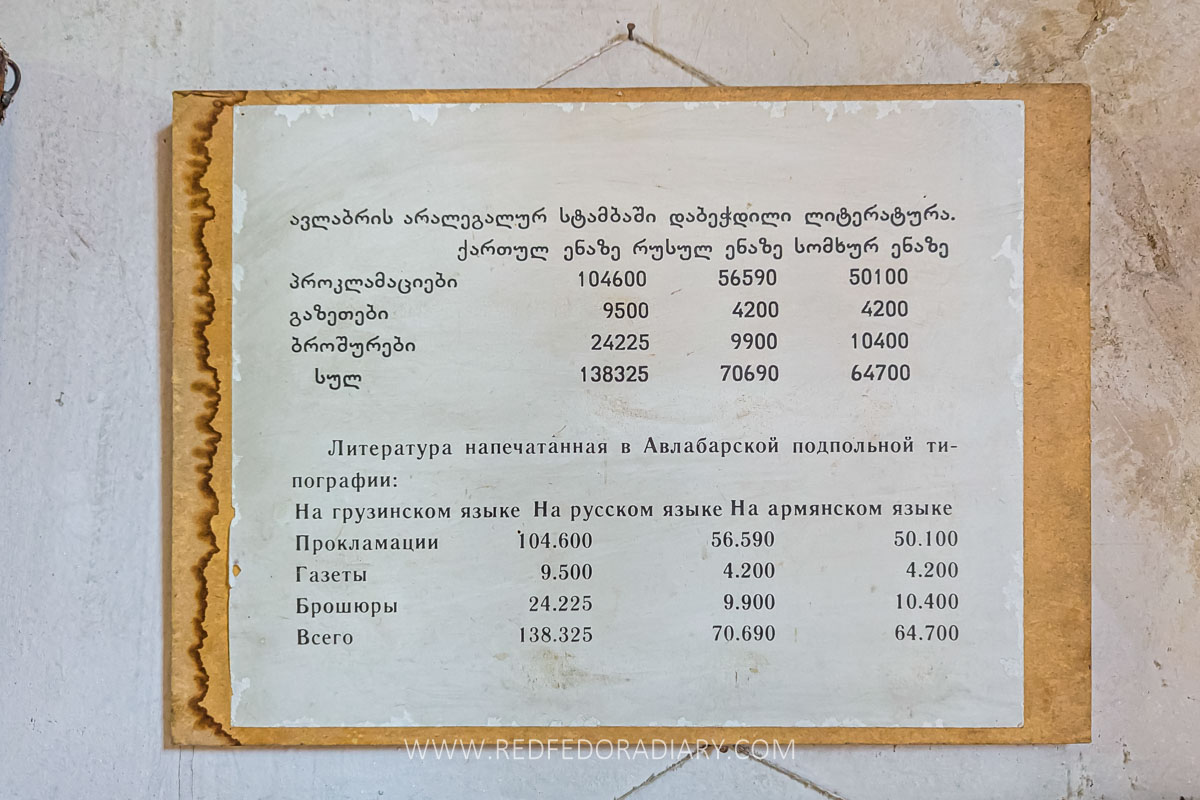
On average, up to 45 thousand various prints, such as newsletters, proclamations, and pamphlets were printed here in Georgian, Russian, and Armenian daily to be transported across Europe and the Caucasus from Tbilisi via trains.
These publications laid the groundwork for the revolutionary messaging that would eventually lead to the 1905 revolution and, later on, the 1917 Bolshevik takeover.
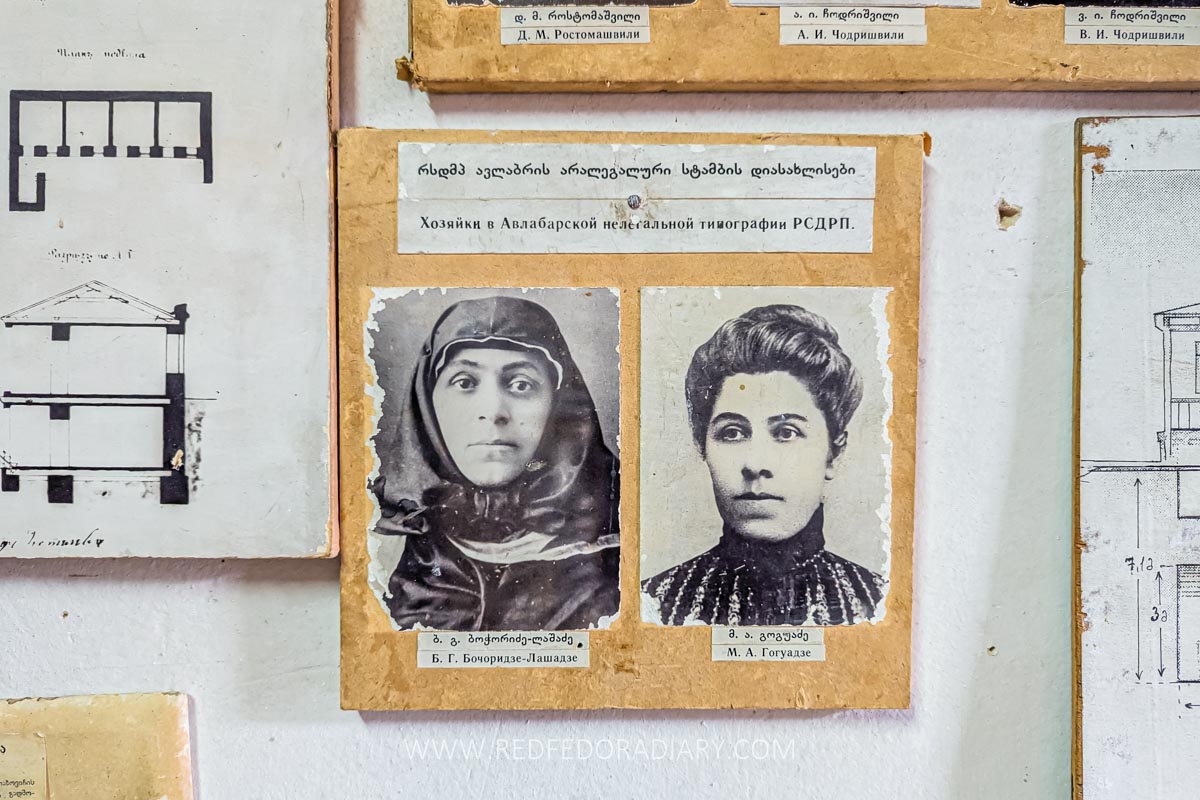
To avoid suspicion, two ladies, the house residents, would sit on the balcony doing their daily chores while being on the lookout at the same time.
If they saw something suspicious or a policeman walking the street, they’d ring a bell to notify the comrades in the basement to stop working and making noises.
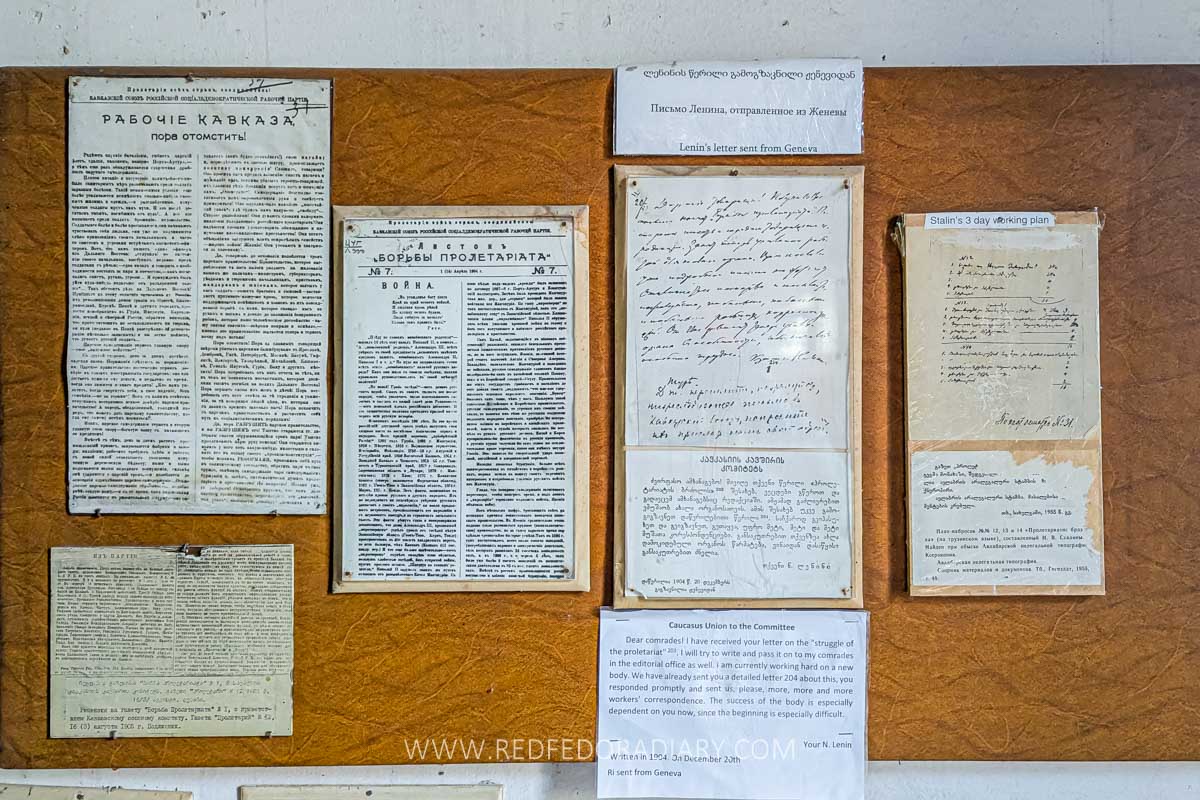
In 1906, during one of the usual raids, the secret printing house was discovered by accident when an officer decided to light a paper on fire and throw it into the well.
Instead of landing into the water, the wind sucked the paper inside the tunnel, giving up the secret entrance of the printing room.
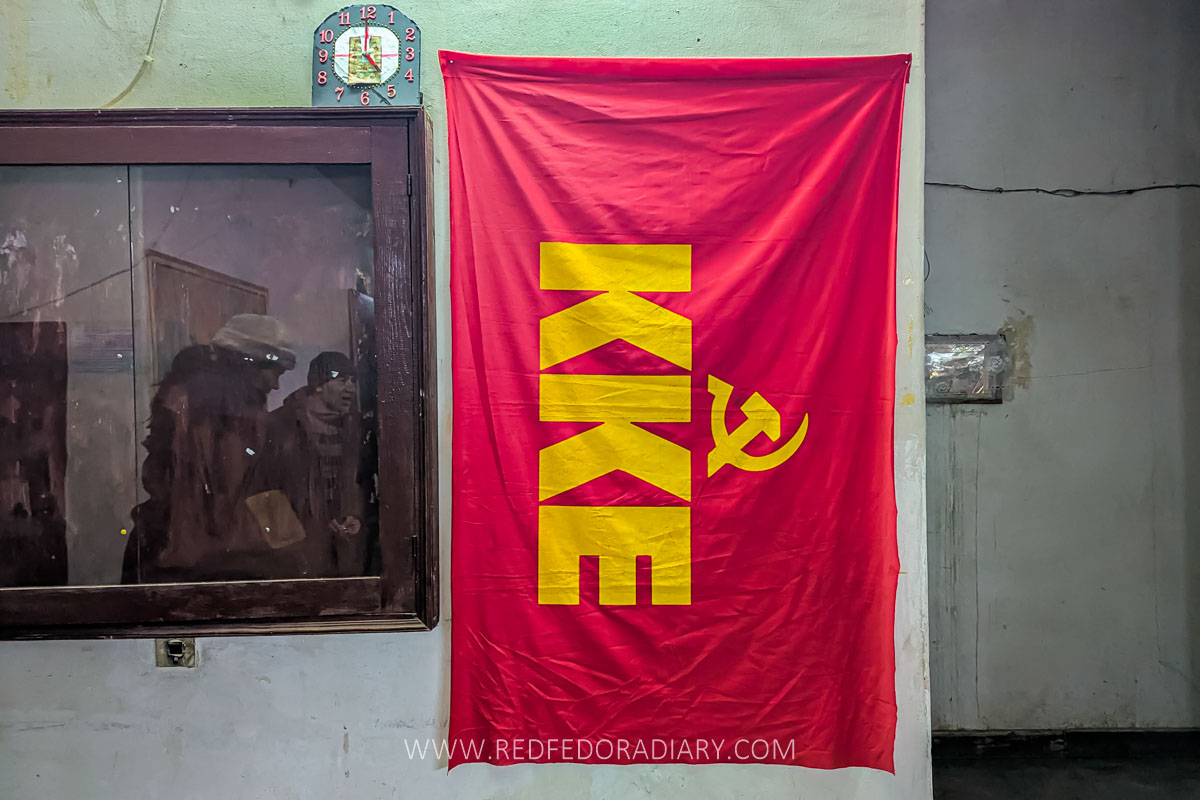
The activists were arrested, the printing house was permanently closed, the house destroyed, well filled with the soil, and the printing press confiscated.
Years later, when Stalin became the leader of the Soviet Union, the underground printing house was restored and opened into a museum in 1937.
Back in Soviet times, this place was a well-known stop for visitors from all over the USSR and other Communist countries.
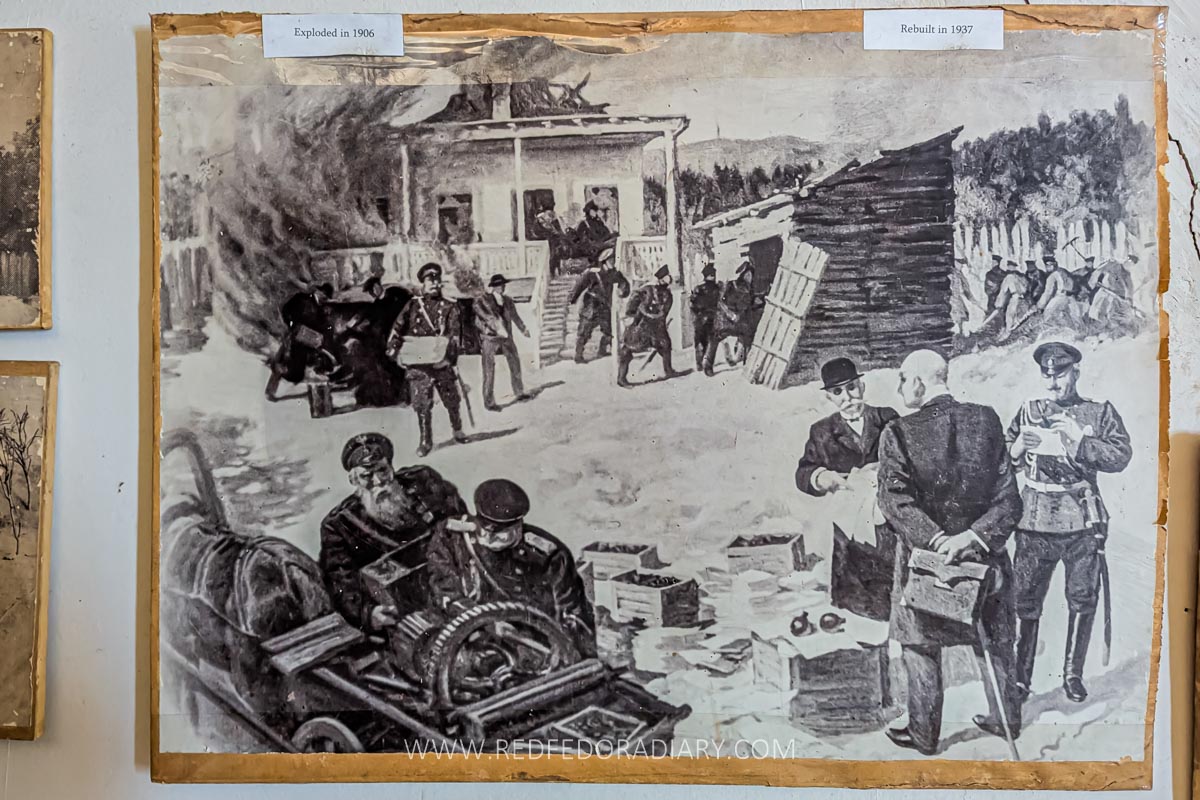
It was especially popular with Chinese tourists, and interestingly, that hasn’t changed much. Our guide mentioned that most visitors today still come from China.
Like many Soviet-era buildings and monuments across Georgia, the museum was neglected in the chaotic “dark 90s” but has since reopened and is back on the map for curious travelers.
In 2012, the National Parliamentary Library of Georgia officially took over the museum’s administration. Sadly, it looks like a dumping ground for the Library’s unwanted bookshelves and furniture.
Essential info before visiting Stalin Underground Printing House
Museum layout and what to expect
Through the massive black door with a hammer and sickle icons, you enter the printing press museum, where you see various information boards, examples of the brochures and newspapers printed here, black and white photos of the committee members and other important figures, as well as other Stalin and Lenin memorabilia.
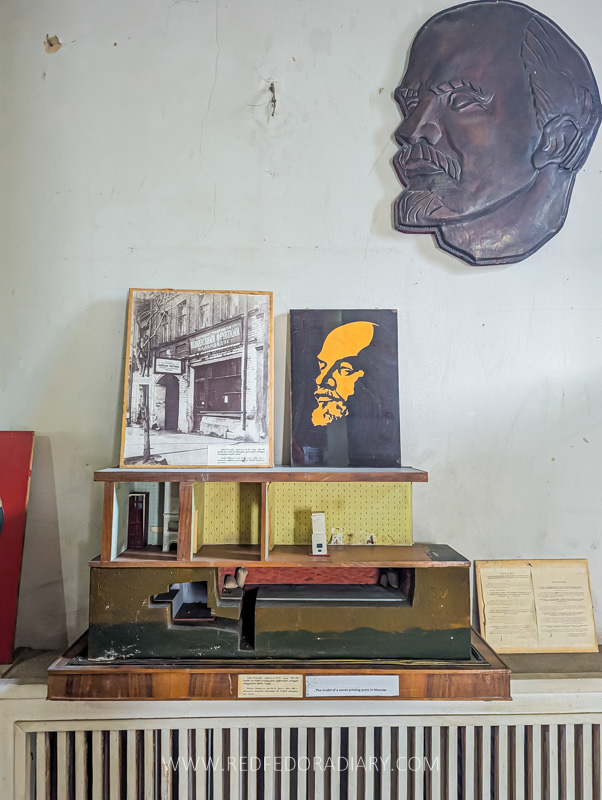
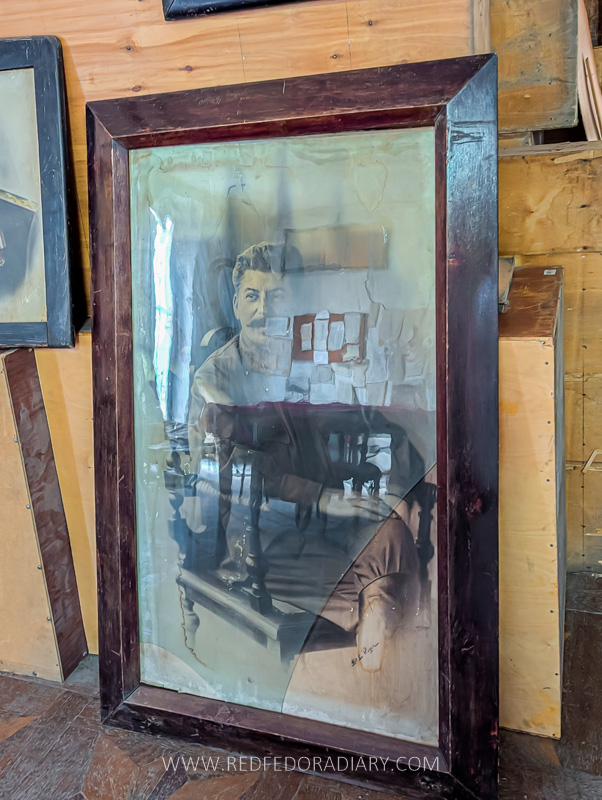
You’ll also see a map of all the cities across Europe where the revolutionaries delivered the printed propaganda, the model of Moscow’s underground printing house disguised as a grocery store, blueprints of the Tbilisi secret printing house, portraits of activities responsible for printing, assembling, transporting and distribution of these materials.
There are many things to look at, but the info boards have minimal signage in English, and caretakers don’t speak the language. Most of the information is provided in Russian and Georgian. Some boards are intuitive to understand if you know the museum’s story.
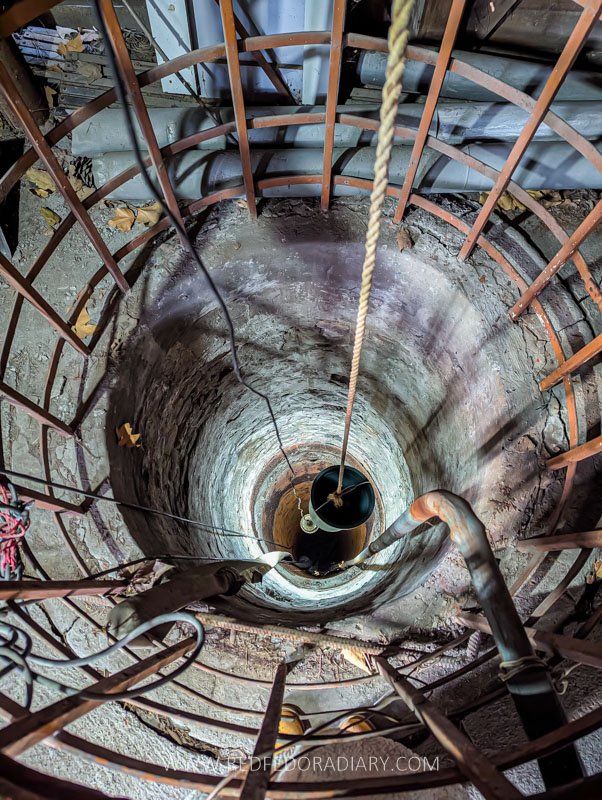
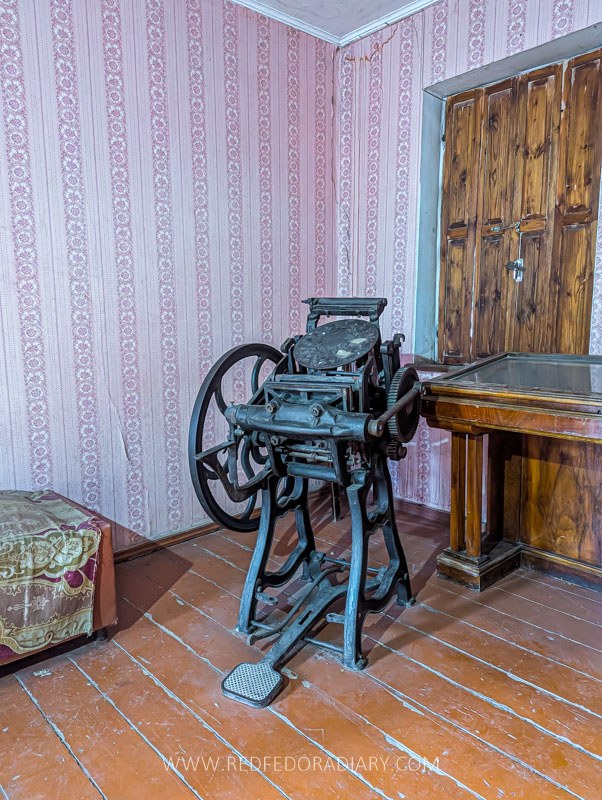
Once finished here, you’ll be guided to a courtyard to see the well and then walk down the rusted circular staircase to the original printing room with the original press from Germany.
Afterward, you’ll walk the stairs to the residential house and see the room where Stalin would allegedly rest, sleep, and overnight. Pay attention to a quirky portrait of Stalin, which shows him at different ages when looked at from various angles.
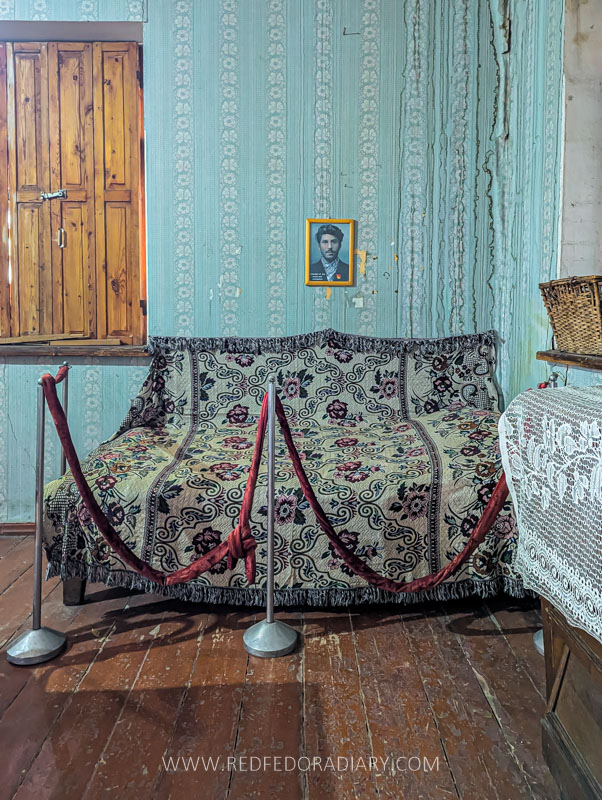
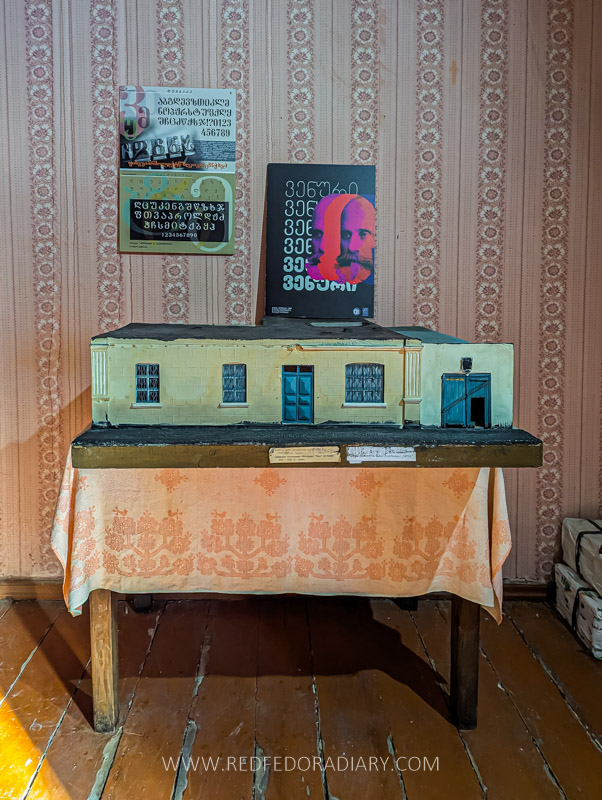
The second room has a smaller printing press, and another model of Baku’s Underground Printing House called Nina.
If you are traveling to Tbilisi solo and want to visit the museum with a group, check the availability of the Revolutionary Tbilisi Walking Tour, which includes a visit here.
Museum opening hours
The Stalin Underground Printing House was open every day without official hours. You’d knock on the door, ring a bell, or call the guard on the number placed next to the door to let you inside.
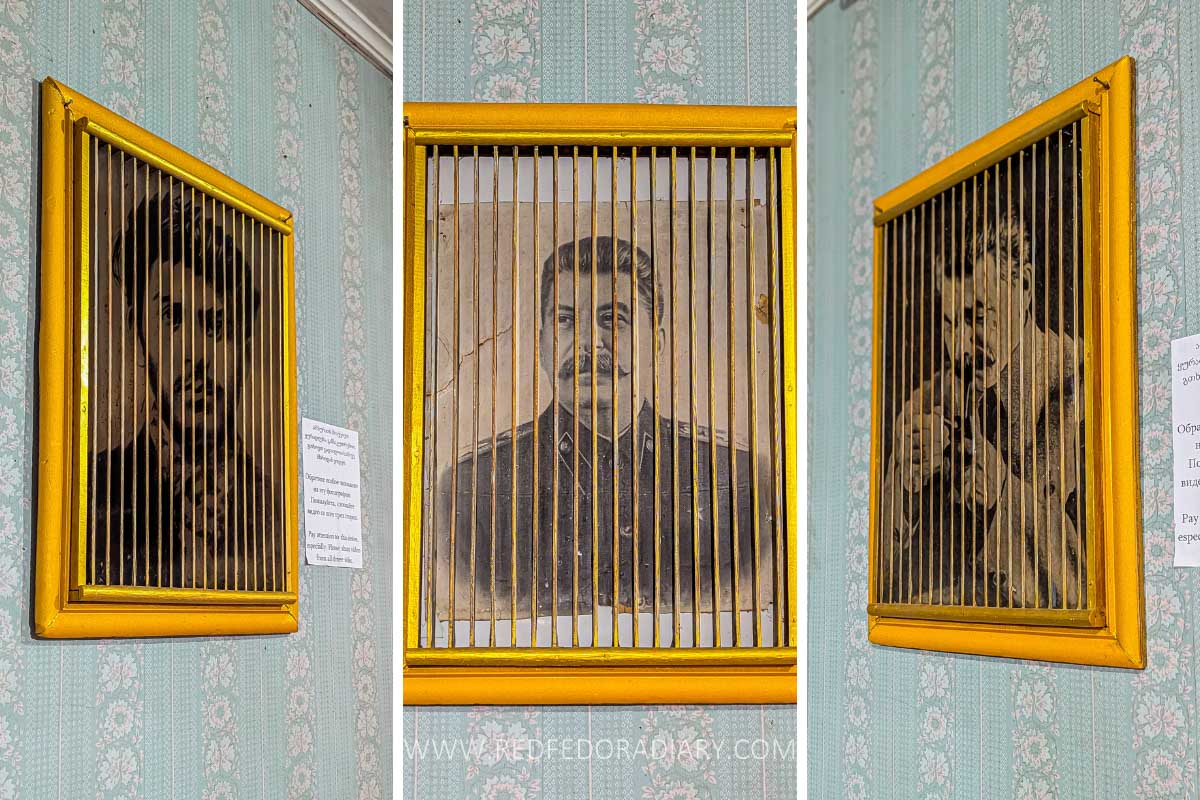
However, on my last visit in February 2025, I learned things have changed slightly. The museum is open from 10 am to 6 pm, Monday to Friday. It is closed on weekends.
Museum Ticket
The A4 size paper printout on the door says that the Stalin Underground Printing House Museum is free to enter.
It has always been free whenever I went, and I have always donated a few Lari to the caretakers. However, I’ve also heard from various visitors that they were charged 10 GEL a few years back.
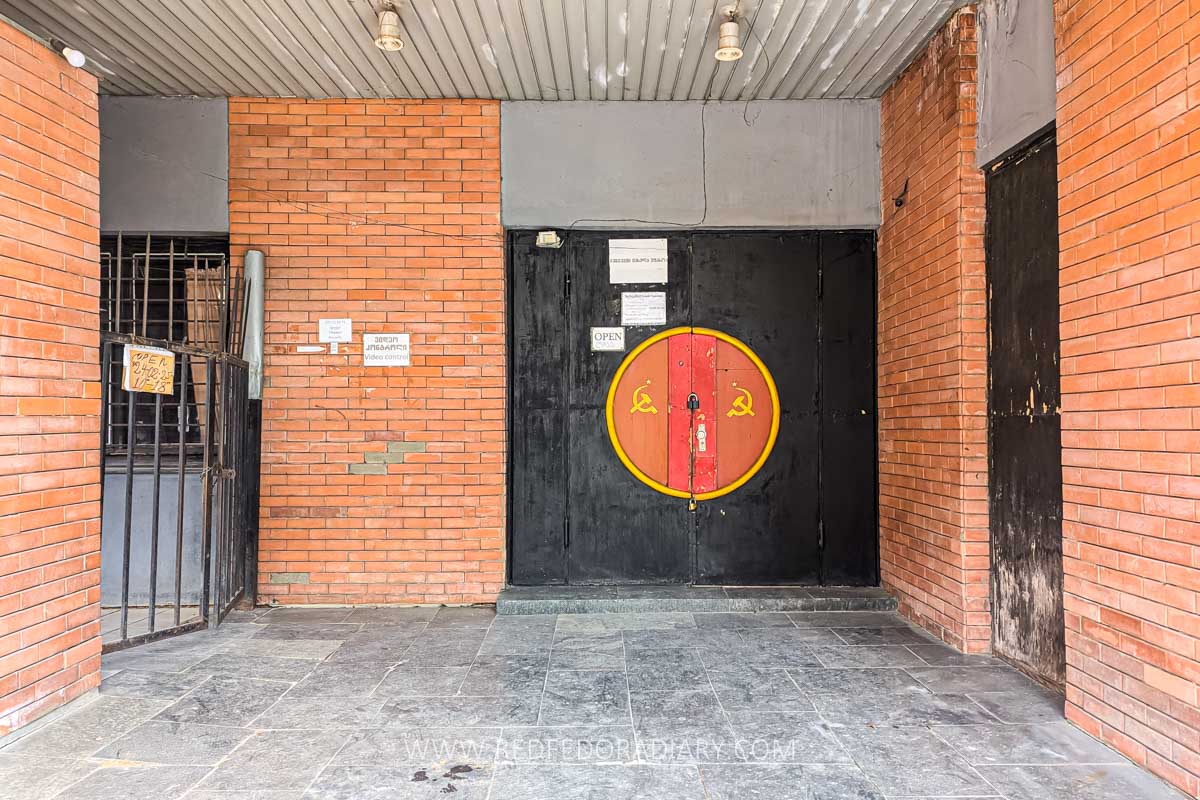
On my last visit, when I enquired, our guide confirmed the museum is free, adding that once, he was suspended by the administration for several weeks for taking a donation.
Luckily, the court ruled in favor of him, and he was reinstated. Thus, he is wary when offered a donation, but I still left him 20 GEL for the two of us.
How to get to the museum
Located in the Avlabari neighborhood, the museum is easily reached by public transport or a Bolt taxi.
From Freedom/Liberty Square, the museum is around 10-minute drive away and should cost 5-7 GEL when booking a taxi via the Bolt app. Alternatively, if you also want to experience the local public system, take a metro to 300 Aragveli station and walk around 11 minutes to the museum.


It looks like a very interesting place to visit. I hope to visit there some day…
irinathayer.com
Thanks, great article.
I am so keen to visit this place after reading your post. The secret getaway is so exciting. Revisiting historical sites like these is something we enjoy a lot.
Wow what an interesting and unsettling place to visit, we would visit for sure. Thanks for the tip
Wow! This place is quite fascinating and a worth visit. I love visiting places that allow you to peep into a bygone era. The entrance to the secret room, the antique publishing machine, the emergency exit and the old walls in ruins – everything tickles your imagination and curiosity to know more about its enigmatic past. Thanks for sharing this beautiful piece of history. 🙂